Design & Build an Irrigation System
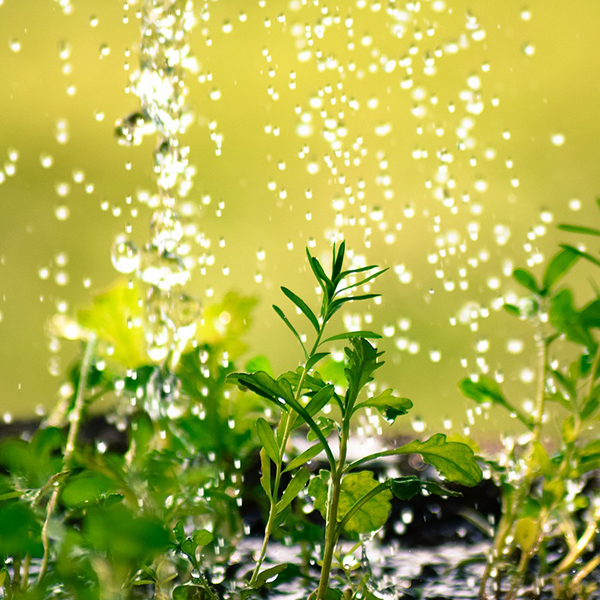
Water falling on plants (annawaldi, Pixabay)

Water falling on plants (annawaldi, Pixabay)
How does this align with my curriculum?
| Grade | Course | Topic |
|---|
Students will work collaboratively to design and build a simple irrigation system that transports water to at least two plants from one source without leaking.
Overview
Students design, build and test a simple irrigation system that will transport water to at least two plants from one source without leaking.
Timing
45-60 minutes
Setting the Stage
Prior Skills and Knowledge
To successfully participate in this Design & Build, students should be able to:
- work with basic cutting tools (e.g., scissors), fasteners (e.g., tape) and materials (e.g., plastic)
- have an understanding of the basic needs of plants
- understand that people and technology can assist in making sure that plants get what they need to grow and thrive.
Context
Hundreds of seedlings begin to grow in greenhouses in the middle of the cold winter months. In the spring, people can purchase these seedlings in the spring and take home to their gardens to plant.
Greenhouses can have hundreds or thousands of plants. Watering them can take a very long time! Outside of the summer months, a greenhouse may be operated by just a few people. These people need a system for efficiently watering the plants.
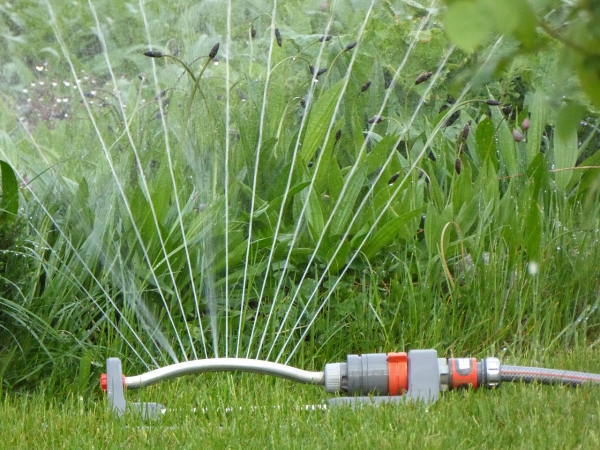
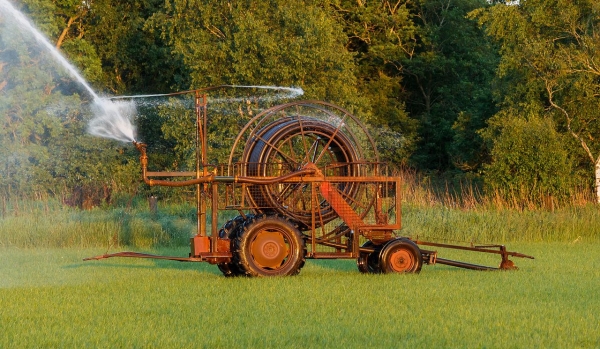
When faced with a Design & Build challenge, students need to consider a variety of possible solutions. Brainstorming is a way of generating ideas that requires students to be respectful listeners and creative thinkers. This kind of collaborative thinking and sharing requires a classroom environment that encourages and supports risk-taking and innovative thinking.
In this Design & Build challenge, students will design, build and test a simple irrigation system that will transport water to at least two plants from one source without leaking.
This design and build could begin from:
- questions and/or comments from students about water and plants. Discuss using questions such as:
- “What kinds of tools do people use to give water to indoor plants?”
- "What kinds of tools do people use to give water to outdoor plants?”
- “Why do plants need water?”
- exploring photos or videos of different types of irrigation systems and technologies from around the world. Discuss using questions such as:
- “What are some methods that farmers use to provide water to plants?”
- “How do these methods compare and contrast to the ways in which you provide water to your home garden or indoor plants?”
- reading a book such as The Curious Garden by Peter Brown. Discuss using questions such as:
- “What do you need to grow a garden?”
- “How do those needs change depending on where you are growing your garden (e.g., on a window sill vs. outside)?”
- Show students before and after photographs of the High Line, a park in New York City built on an old rail line. Discuss using questions such as:
- “What is different about these two photos?”
- “Do you think this is a good place for a garden? Why/why not?”
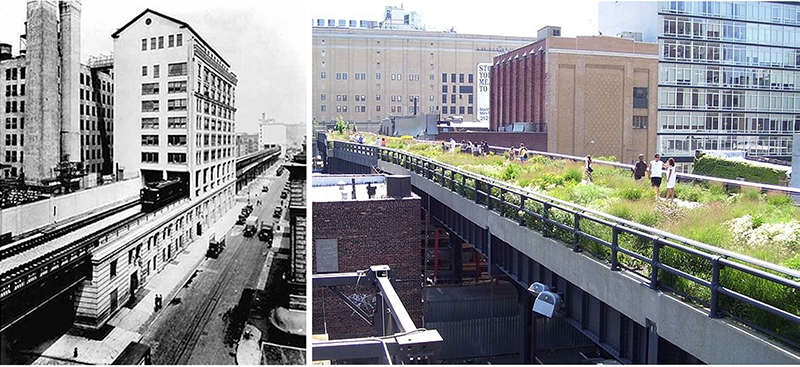
Design Criteria
As a class, students brainstorm criteria that their prototype irrigation system must meet. Educators may choose to add other criteria that are curriculum-specific, such as using joiners/fasteners, specific measurements, specific materials, etc.
Design criteria examples:
- Design a model irrigation/watering system that waters at least two plants at the same time
- The water should come from one starting point
- The system must have no leaks
- Use only the materials provided
Details
- Pencils
- Drinking straws, various diameters
- Plastic drinking cups, various sizes
- Duct tape
- Construction tools such as scissors, other fasteners, and glue
- Measuring tools such as rulers, metre sticks, measuring tapes and/or stopwatch
- Recording tools such as pencils, erasers, paper, science notebooks, cameras or handheld electronic devices
- Access to water
- Rags or paper towels for cleaning up spills
- Optional – large garbage bags to build system on, or plastic table cloths
- Collect an assortment of recycled and new materials that students will use to construct the irrigation systems.
- Set up material sourcing stations, organized by type of material. Alternately, organize an assortment of materials to be provided to each student or work group.
Students develop Design & Build skills as they design, build and test a prototype irrigation system.
Students will follow the steps of the Design & Build process:
- identify the problem to be solved/need to be met
- brainstorm criteria that the prototype must meet
- share their questions and ideas for a solution to the problem/need
- discuss the advantages and disadvantages of each in order to select a potential solution to test
- visualize what the solution might look like and make design sketches based on their visualizations
- develop a design plan (e.g., identify the tasks or key steps involved in developing the solution, make decisions about tools and materials that will be needed, include labelled sketches)
- build/develop the design idea based on the design plan
- test their prototypes based on the design criteria
- modify the prototype and retest it against the design criteria as necessary
- reflect on their results and identify things that could be done to improve their prototypes
Observe and document, using anecdotal comments, photos and/or video recordings, student’s ability to:
- Work Collaboratively – students work collaboratively to complete a task and evaluate their group processes throughout the Design & Build process
- Generate Ideas – students use idea generation skills and strategies, such as brainstorming, to identify possible solutions as well as make decisions about the pros and cons of each solution
- Communicate – students communicate their thinking and learning in words, sketches, photos, videos, etc. (e.g., in identifying the problem, in design plans that include 2D design sketches and key design steps/tasks, in lists of materials/equipment/tools)
- Work Safely – students demonstrate safe practices when using a variety of tools and materials while prototyping
- Test – students use skills of observing and recording data as they test their prototypes
- Reflect – students reflect on the results of their prototype testing and suggest things that they might do differently to improve their prototypes
| Students: Saying, Doing, Representing |
Educator: Responding, Challenging |
|---|---|
| Students identify and refine the problem to be solved/need to be met. |
|
| Students brainstorm and record criteria for the irrigation system. |
|
| Students visualize what the solution might look like and make design sketches based on their visualizations. |
|
| Students develop a design plan (e.g., steps in creating a prototype, decisions about tools and materials). |
|
| Students build/develop and test the design idea based on their sketches and design plan (create the prototype). |
|
| Students modify the prototype and retest it against the design criteria as necessary. |
|
| Students reflect on the results of their testing and identify things that could be done differently in the future. |
|
Literacy
- Ask questions (e.g., “Why do we need irrigation systems?” “Why do plants need a reliable source of water?”)
- Communicate thoughts, feelings and ideas (e.g., talk about the ways in which irrigation systems have changed and developed over time; discuss how irrigation technology can improve our lives and reduce our workload)
- Working collaboratively (e.g., discuss possible solutions to construction challenges)
Mathematical Thinking
- Measure and record (e.g., in a chart) distance, volume, and time using standard units (e.g., the volume of water (mL) used for each test of the systems, the distance the water travels before and after modifying the model, time takes the water to get to the end of the system)
- Solve problems using student-generated algorithms (e.g., create a picture-based algorithm to code directions on how to build the irrigation system)
Visual Arts
- Create artworks that express feelings, ideas, and issues using traditional and current media technologies (e.g., develop the design of the irrigation system using a digital drawing program)
- Use elements of design to communicate ideas, messages, and understandings (e.g., create a commercial to advertise and promote the features of the irrigation system)
If your students are interested in learning more, the following may provoke their curiosity:
- Increase the complexity of the irrigation system challenge (e.g., add more plants to reach, more distance to reach or surface area to cover).
- Put an entrepreneurial spin on the Design & Build (e.g., as part of the design criteria, determine a budget and assign prices to the building materials).

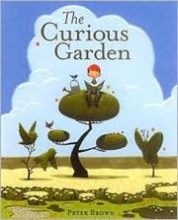
The Curious Garden
by Peter Brown
A little boy tends a neglected garden, which grows to transform a city.
ISBN: 9780316015479
Learn More
Needs of Plants (Backgrounder)
Information on major conditions plants need, such as light, air, water, nutrients and space to grow.
Plants: Needs (Picture Collection)
8 images representing some of the needs of plants for healthy growth such as water, nutrients and light
Needs of Plants (Backgrounders)
Information on major conditions plants need, such as light, air, water, nutrients and space to grow.
Plants: Needs (Picture Collection)
8 images representing some of the needs of plants for healthy growth such as water, nutrients and light
Plant Functions (Backgrounders)
Learn about the important plant functions of photosynthesis, respiration and transpiration and meet Dr. Smith, a professor of Plant Science at McGill University in Montreal.
Materials
- Pencils
- Drinking straws, various diameters
- Plastic drinking cups, various sizes
- Duct tape
- Construction tools such as scissors, other fasteners, and glue
- Measuring tools such as rulers, metre sticks, measuring tapes and/or stopwatch
- Recording tools such as pencils, erasers, paper, science notebooks, cameras or handheld electronic devices
- Access to water
- Rags or paper towels for cleaning up spills
- Optional – large garbage bags to build system on, or plastic table cloths
Preparation
- Collect an assortment of recycled and new materials that students will use to construct the irrigation systems.
- Set up material sourcing stations, organized by type of material. Alternately, organize an assortment of materials to be provided to each student or work group.
What to Do
Students develop Design & Build skills as they design, build and test a prototype irrigation system.
Students will follow the steps of the Design & Build process:
- identify the problem to be solved/need to be met
- brainstorm criteria that the prototype must meet
- share their questions and ideas for a solution to the problem/need
- discuss the advantages and disadvantages of each in order to select a potential solution to test
- visualize what the solution might look like and make design sketches based on their visualizations
- develop a design plan (e.g., identify the tasks or key steps involved in developing the solution, make decisions about tools and materials that will be needed, include labelled sketches)
- build/develop the design idea based on the design plan
- test their prototypes based on the design criteria
- modify the prototype and retest it against the design criteria as necessary
- reflect on their results and identify things that could be done to improve their prototypes
Assessment
Observe and document, using anecdotal comments, photos and/or video recordings, student’s ability to:
- Work Collaboratively – students work collaboratively to complete a task and evaluate their group processes throughout the Design & Build process
- Generate Ideas – students use idea generation skills and strategies, such as brainstorming, to identify possible solutions as well as make decisions about the pros and cons of each solution
- Communicate – students communicate their thinking and learning in words, sketches, photos, videos, etc. (e.g., in identifying the problem, in design plans that include 2D design sketches and key design steps/tasks, in lists of materials/equipment/tools)
- Work Safely – students demonstrate safe practices when using a variety of tools and materials while prototyping
- Test – students use skills of observing and recording data as they test their prototypes
- Reflect – students reflect on the results of their prototype testing and suggest things that they might do differently to improve their prototypes
Co-constructed Learning
| Students: Saying, Doing, Representing |
Educator: Responding, Challenging |
|---|---|
| Students identify and refine the problem to be solved/need to be met. |
|
| Students brainstorm and record criteria for the irrigation system. |
|
| Students visualize what the solution might look like and make design sketches based on their visualizations. |
|
| Students develop a design plan (e.g., steps in creating a prototype, decisions about tools and materials). |
|
| Students build/develop and test the design idea based on their sketches and design plan (create the prototype). |
|
| Students modify the prototype and retest it against the design criteria as necessary. |
|
| Students reflect on the results of their testing and identify things that could be done differently in the future. |
|
Cross-curricular Connections
Literacy
- Ask questions (e.g., “Why do we need irrigation systems?” “Why do plants need a reliable source of water?”)
- Communicate thoughts, feelings and ideas (e.g., talk about the ways in which irrigation systems have changed and developed over time; discuss how irrigation technology can improve our lives and reduce our workload)
- Working collaboratively (e.g., discuss possible solutions to construction challenges)
Mathematical Thinking
- Measure and record (e.g., in a chart) distance, volume, and time using standard units (e.g., the volume of water (mL) used for each test of the systems, the distance the water travels before and after modifying the model, time takes the water to get to the end of the system)
- Solve problems using student-generated algorithms (e.g., create a picture-based algorithm to code directions on how to build the irrigation system)
Visual Arts
- Create artworks that express feelings, ideas, and issues using traditional and current media technologies (e.g., develop the design of the irrigation system using a digital drawing program)
- Use elements of design to communicate ideas, messages, and understandings (e.g., create a commercial to advertise and promote the features of the irrigation system)
Extending the Learning
If your students are interested in learning more, the following may provoke their curiosity:
- Increase the complexity of the irrigation system challenge (e.g., add more plants to reach, more distance to reach or surface area to cover).
- Put an entrepreneurial spin on the Design & Build (e.g., as part of the design criteria, determine a budget and assign prices to the building materials).

Supporting Media

The Curious Garden
by Peter Brown
A little boy tends a neglected garden, which grows to transform a city.
ISBN: 9780316015479
Learn More
Needs of Plants (Backgrounder)
Information on major conditions plants need, such as light, air, water, nutrients and space to grow.
Plants: Needs (Picture Collection)
8 images representing some of the needs of plants for healthy growth such as water, nutrients and light
Learn More
Needs of Plants (Backgrounders)
Information on major conditions plants need, such as light, air, water, nutrients and space to grow.
Plants: Needs (Picture Collection)
8 images representing some of the needs of plants for healthy growth such as water, nutrients and light
Plant Functions (Backgrounders)
Learn about the important plant functions of photosynthesis, respiration and transpiration and meet Dr. Smith, a professor of Plant Science at McGill University in Montreal.